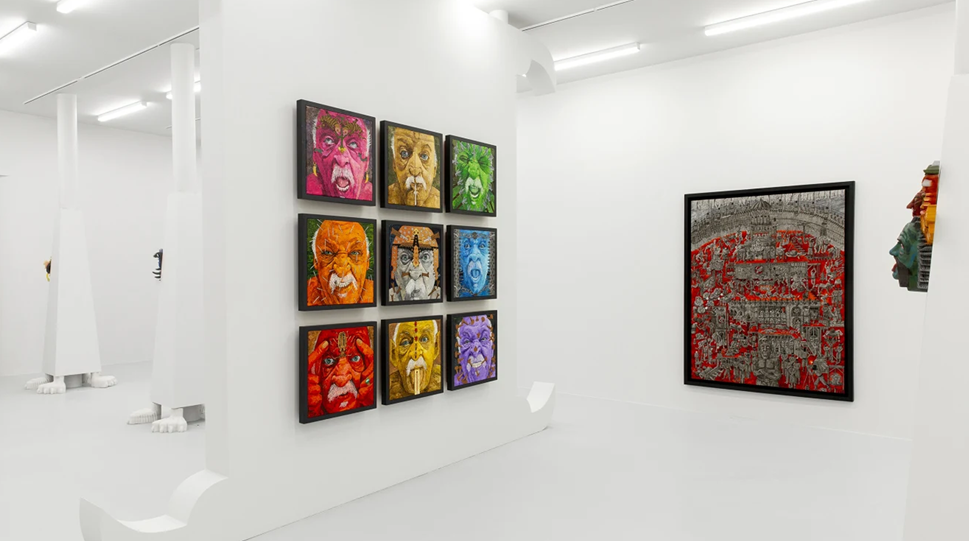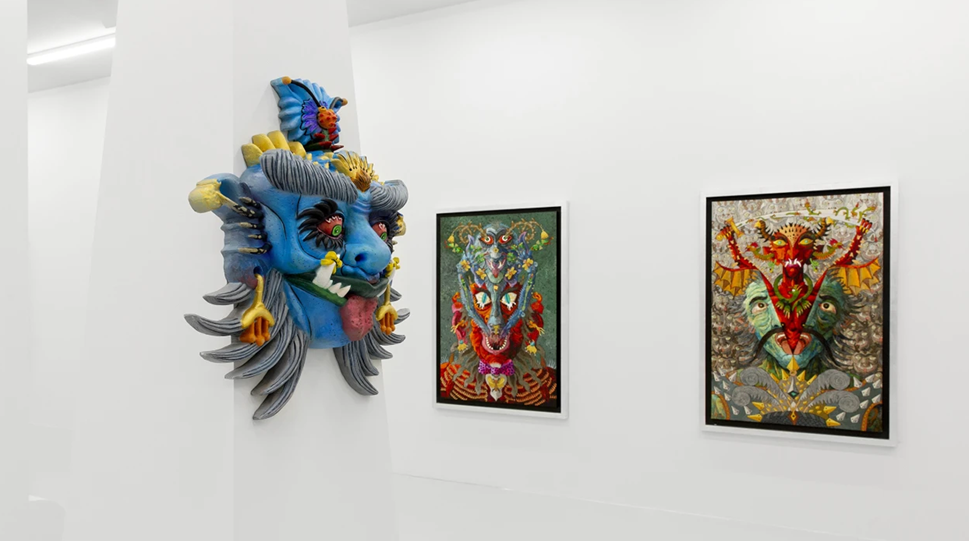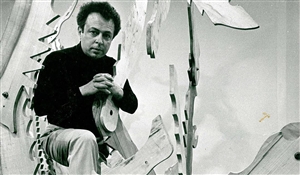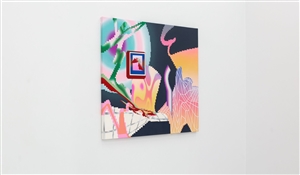A Review of "Mad"; a Solo Show by Ali Akbar Sadeghi at Parallel Circuit Gallery
16 Aug 2022Original text in Farsi by Tarannom Taghavi
Translated to English by Omid Armat
Ali Akbar Sadeghi's solo show titled "Mad" runs from June 24 to September 2, 2022, at Parallel Circuit. According to the exhibition's statement, displayed works comprise his paintings produced with acrylic paint on canvas created since 1990 and five masks that he made in cooperation with the AartMaart platform.
Many years of activity in different fields, including painting with different materials, illustrations, graphics, animations, sculpture, and drawing, have made him a world-renowned artist. Epic, mythological, and imaginary subjects in his works combine Iranian art traditions (Miniature, Ghahvekhaneh, Qajar paintings, etc.) and Western Surrealism, the art of primitive tribes, popular images, and religious art of the ancient world.
Ali Akbar Sadeghi's concern for anthropological narratives has led him to create expressionist self-portraits, strange creatures, and demon-like masks filled with symbolic meanings. He portrays himself in different conditions as an antihero in most of his works. These images contain the duality of good and demon most of the time. In the "mad" show, nine frames are arranged in a single installation which displays the artist with nine different shapes and colors: sometimes with insects and other creatures sitting on his forehead, and sometimes with nails, spears, and needles in his face. Signs of pain, fear and other human emotions are visible based on their situations. Color has attained a psychological aspect and emphasizes the artist's inner feelings when facing different occasions.
There is no empty space in Sadeghi's paintings; something is happening in every corner: a frame filled with countless dragons in battle, where their yellow eyes are the only thing that separates them; the Ouroboros snake(1) coiled around the neck of a red demon, a demon sitting on the shoulder of another demon; demons sitting on a throne like the Hindu deities; blue naked humans standing by for service; humans lying all around an image; a demon-like goddess sitting on a lion, with snakes around her body like the ancient greek goddess Crete(2), sometimes sitting at the bottom of a sea in a mythical world while combing her hair like Medusa(3) with a dagger; all originated from the artist's imaginary world.

Installation of Ali Akbar Sadeghi’s works in “Mad” exhibition | Parallel Circuit Gallery | Source: www.dastan.gallery
Masks installed on the wall and patterns of demons make the viewer face dualities such as good and evil, god and devil, justice and injustice, light and darkness, war and peace, goodness and badness, hidden and visible. Through a split mask, a red, winged demon has emerged with snakes wrapped around its head and neck with a sword on which snakes are moving. The mask that shows the split head of a devil has a more peaceful face, while the other devil protruding from inside with its fiery face emphasizes the dualities dominating Sadeghi's works. In the culture of primitive tribes, masks are associated with religious and spiritual concepts and are used in ritual dances and other social and religious events. In most traditional cultures, when someone wears a ritual mask, they conceptually lose their human identity and become one with the mask. However, there is no human behind Sadeghi's demon-like masks, but there is an even more horrific demon that may split the outer mask and jump out at any time. In fact, here, the mask, or the persona, is a cover that the demon uses to hide its actual personality from others.
With the rich details of his works, Ali Akbar Sadeghi invites the viewer to a colorful world of the collision between reality and imagination, history and myth, and being and not being. His paintings and drawings are stored in prestigious domestic and foreign collections, including The British Museum, Los Angeles County Museum of Art, and TMoCA.
1. Ouroboros is a greek word for a snake that bites its own tale and refers to the concept of the endless cycle of death and birth.
2. Crete is the name of an island between Greece and Mesopotamia that acted as a medium to transfer Mesopotamia's myths, gods, and social and economical systems to Greece. The most famous goddess in Crete is the Minoan snake goddess that has coiled snakes on her body and hands. The remaining figurines of this goddess dates back to 1600 BC.
3. In Greek myth, Medusa is a woman who can turn anyone who looks in her eyes into stone. According to myths, Athena turned Medusa's hair into snakes because of anger or jealousy.
Cover and slider image:
- www.dastan.gallery






